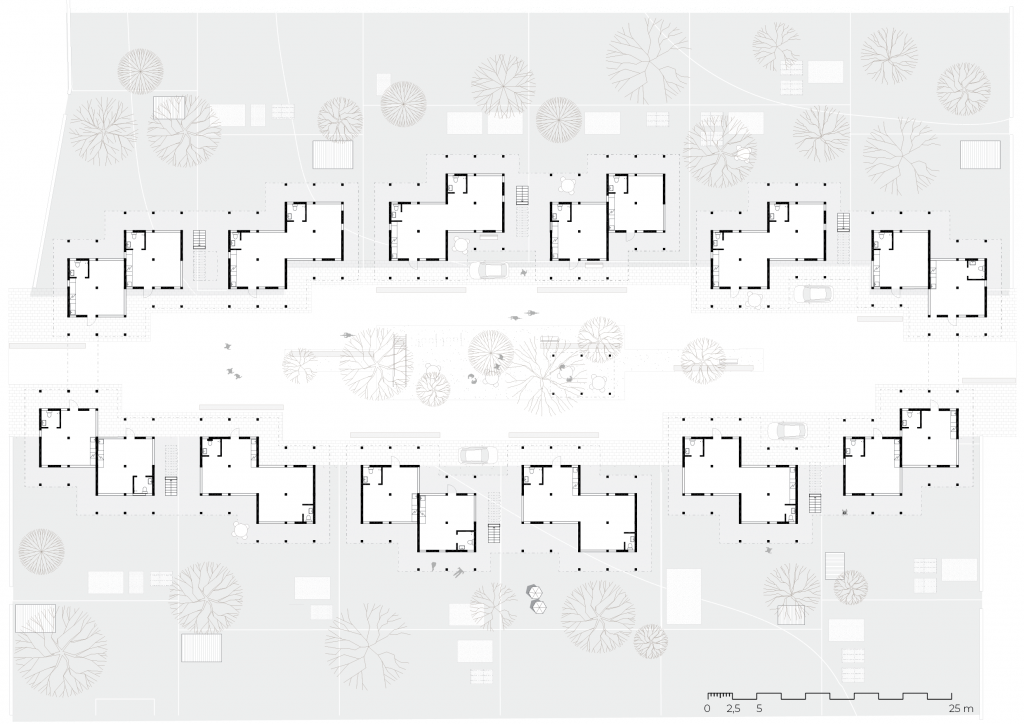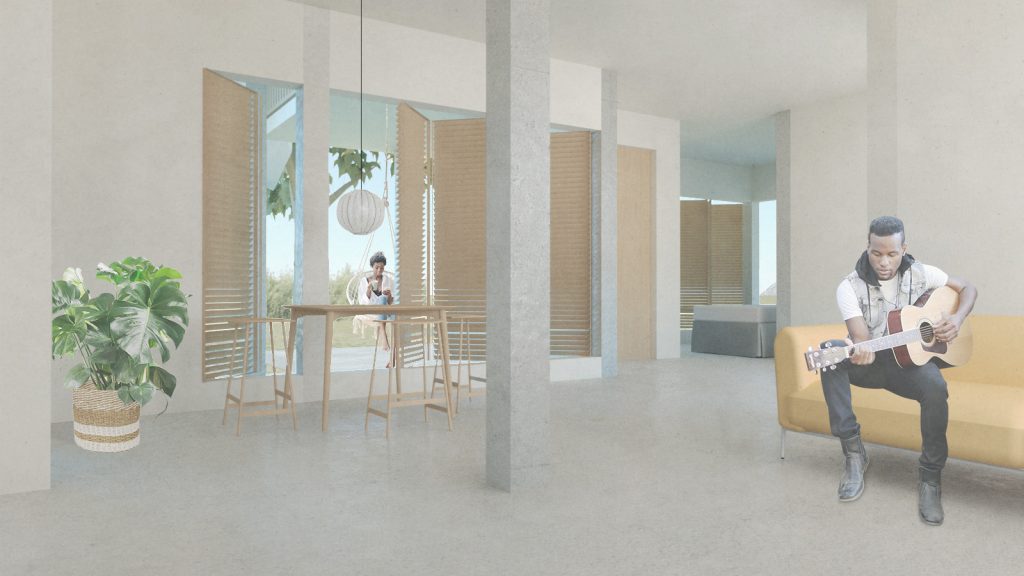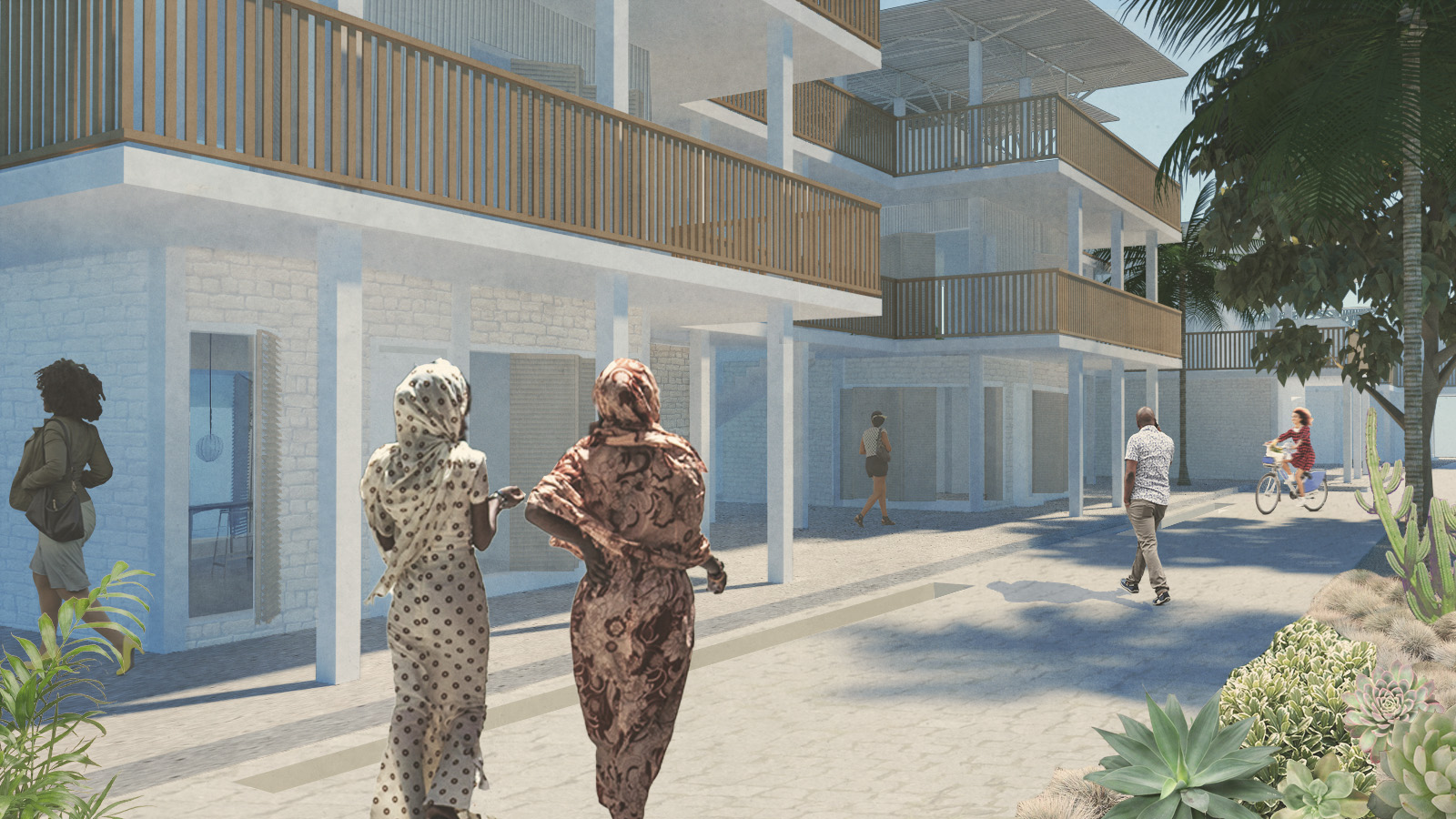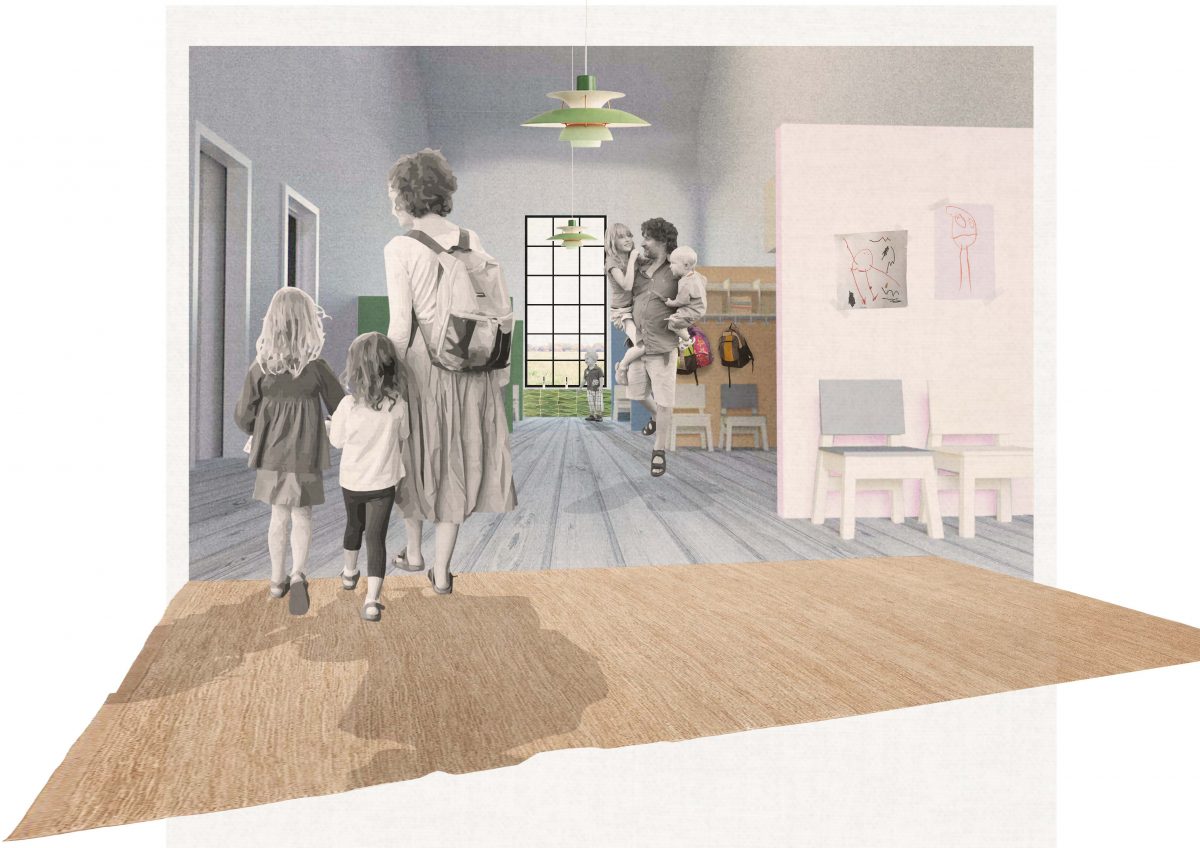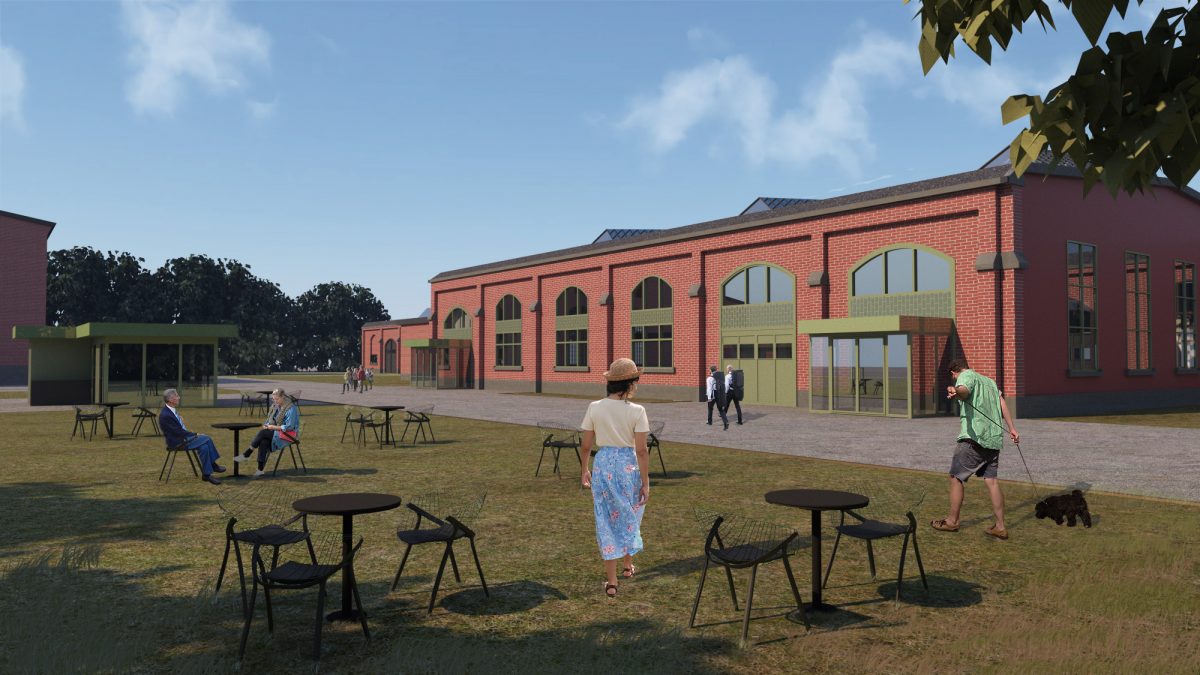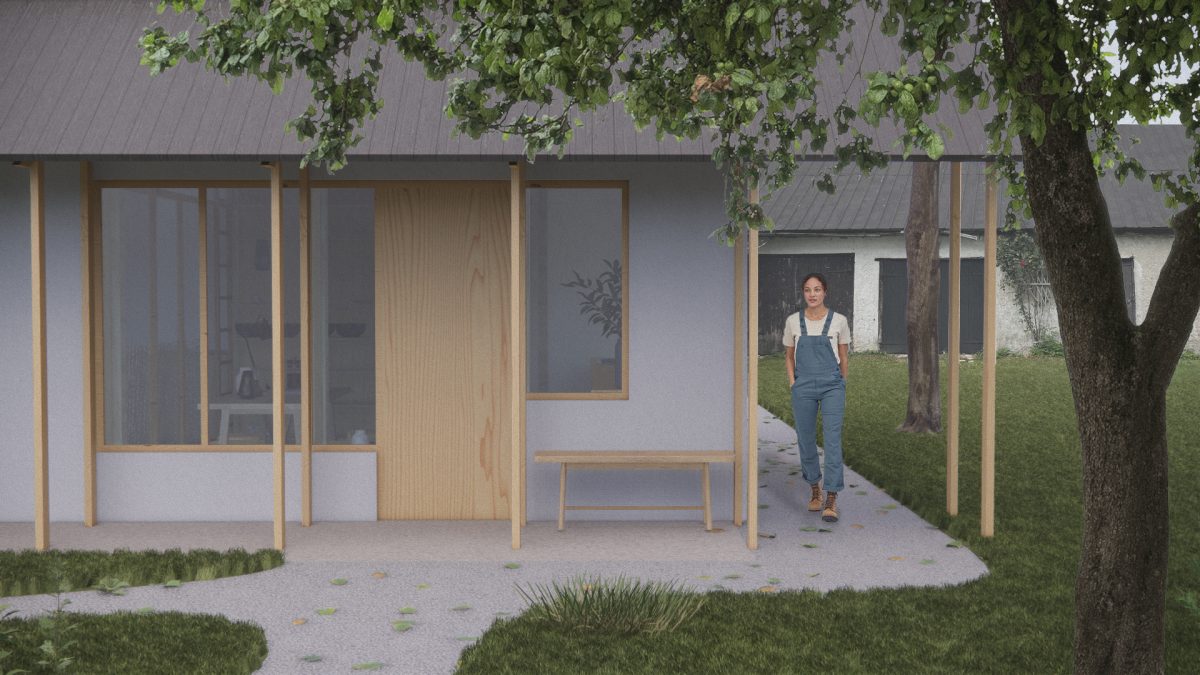Dar es Salaam is the fifth biggest city in Africa with a population of over 6 million people. It is one of the fastest growing cities in Africa and is estimated to have a population of 10 million before 2030.
The fast-growing urban population has resulted in a large housing deficit, as the government hasn’t been able to keep up with the demand. The local regulations are not adaptive enough, and it’s been hard for developers to build adequate, affordable housing. It is estimated that Tanzania’s housing deficit is around 3 000 000 million units, with an annual increase of 200 000 units.
This has lead to 75 % of the inhabitants in Dar es Salaam resorting to live in informal and unplanned settlements. These neighbourhoods grow fast and haphazardly and often lack sufficient infrastructure which leads to uncontrollable flooding and traffic.
A congested neighbourhood which expands horizontally is unbearable in the heat. Buildings that stand too close, have high dividing walls and need to use expensive and heat-emitting air conditioning make the micro-climate in some neighbourhoods of Dar es Salaam uncomfortable and unhealthy.
A housing market study from 2012 shows that 90 % of Tanzanian’s can afford to spend less than $45 dollars on housing every month, and only 3 % can afford a mortgage.
It is clear that Dar es Salaam is in dire need of affordable housing for it’s rapidly growing population, at a price they can afford. The urban poor, most in need of shelter, need to be prioritized when new developments are planned as they represent the majority of the city’s population.

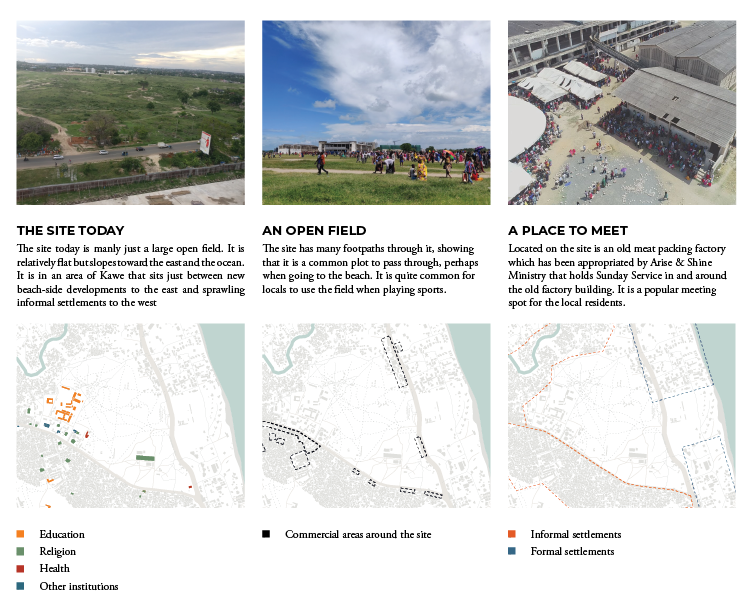
During the fall semester of 2020, in the design studio Urban Shelter at Lund School of Architecture we were challenged to design a neighbourhood on a vacant site in Kawe. Our design covers over eight hectares of residential and commercial areas, marketplaces, schools and sport grounds. As a part of the course we also conducted a virtual study trip to Dar es Salaam where we took part in lectures by local architects and interviewed students and professionals.
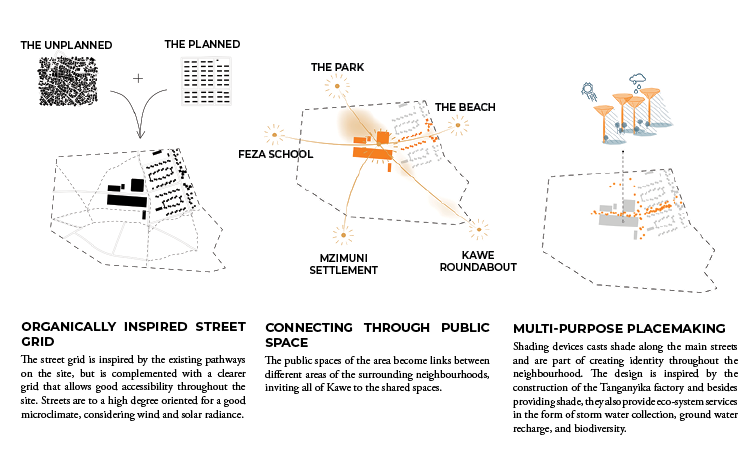
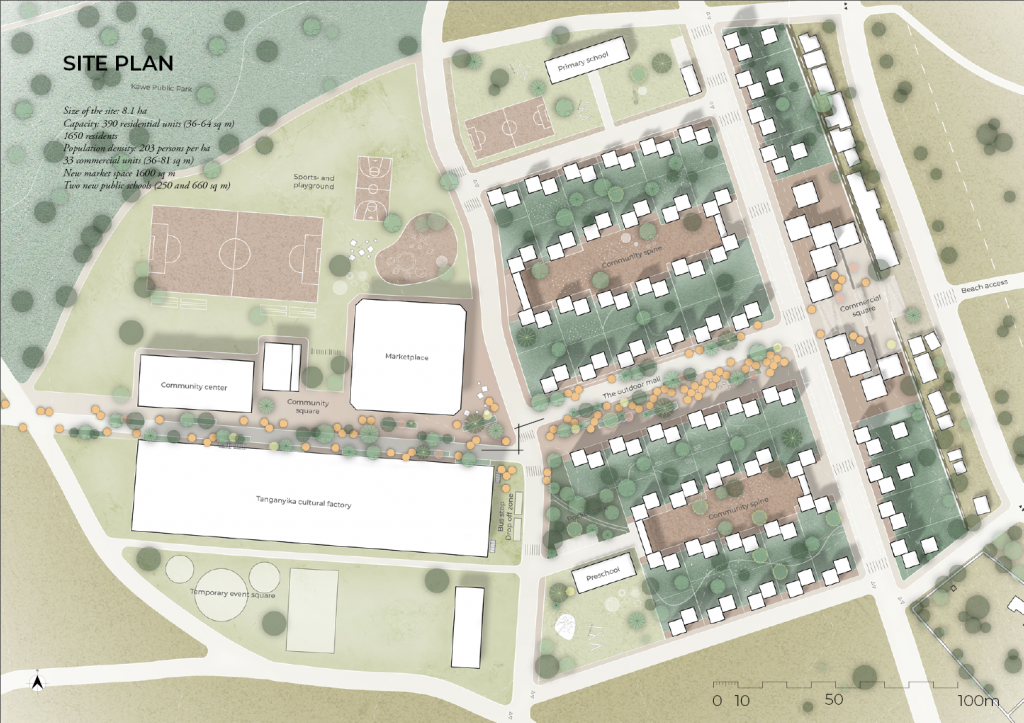
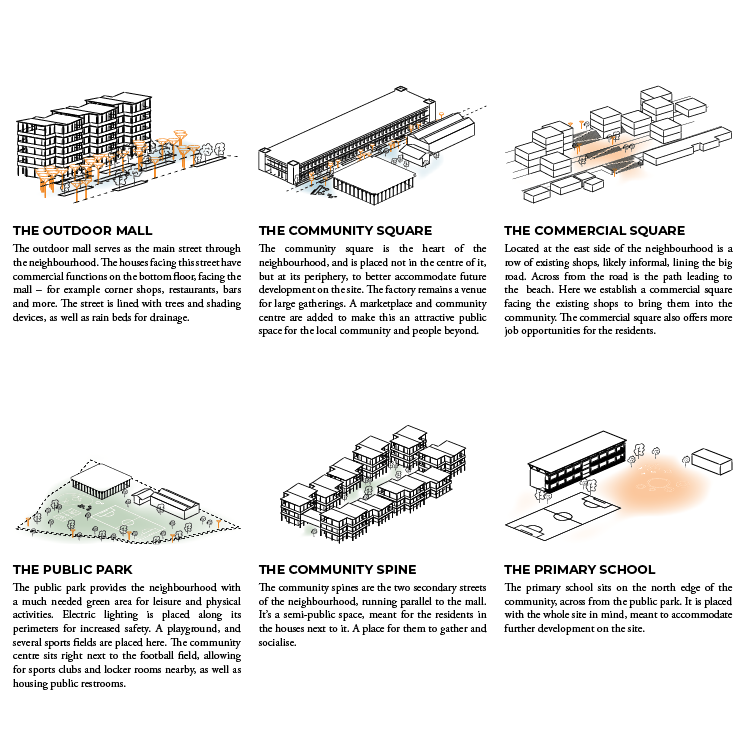

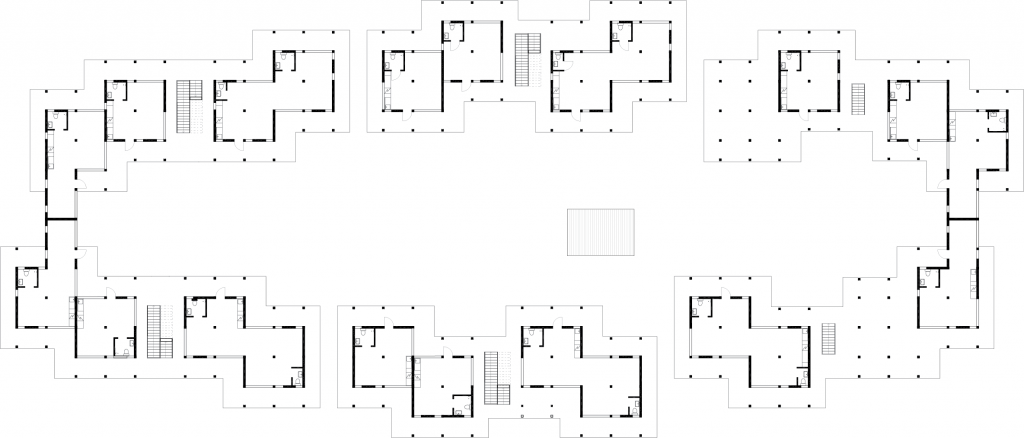
Plan 2
